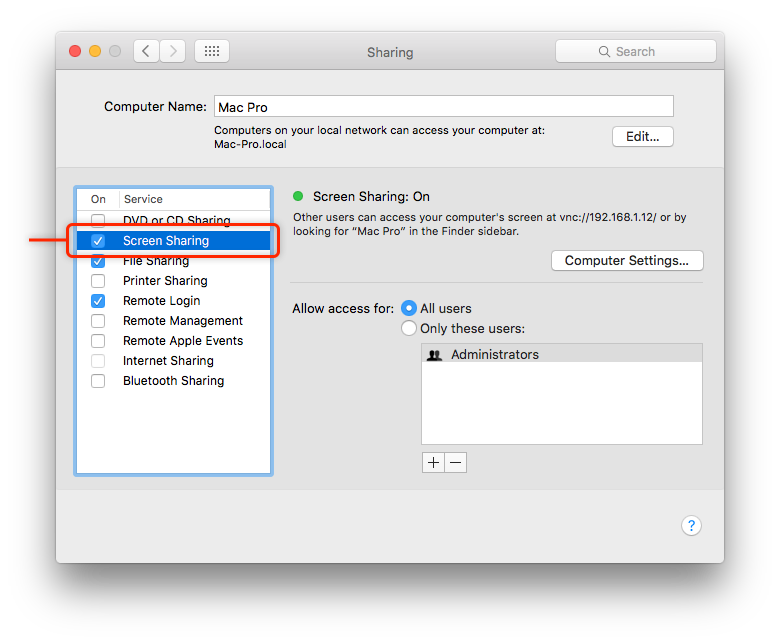

Now with the shortcut created, you can just launch the app and enter the remote hosts IP, host name, or you can use the common notation of specifying a username (and password, though thats bad practice to expose passwords in plain text) with IP and protocol like so: is an alternative to using the the “Connect to Server” keyboard shortcut or the Safari launch approach.Īs mentioned, the hidden Screen Sharing app is a complete VNC client, and though it’s not necessarily the most full featured app in the world it is more than adequate for connecting to and controlling any remote machine running a VNC server, whether that’s another Mac with Screen Sharing enabled, or even a Windows or Linux box. It can now be found in Launchpad through search, though unless the app is placed in /Applications/ it will still not be found in the wider Spotlight search. You could alternatively make an alias and place it in the /Applications folder or elsewhere, but usually the Dock or Launchpad is sufficient enough. Locate the “Screen Sharing” app contained in the CoreServices directory, then drag & drop it to the Dock or to Launchpadįor demonstration purposes, we went with a shortcut placed into Launchpad:.From the Mac OS X Finder, hit Command+Shift+G to summon the “Go to Folder” window and enter the following path:.This is the easiest way to create a simple shortcut:


How to Create a Shortcut for the Screen Sharing VNC Client in Mac OS X If you use VNC to connect to remote computers often, you might want to create an easier way to access the mostly hidden Screen Sharing app.

System/Library/CoreServices/Applications/Screen Sharing.app/ If you’re wondering, the local location of the app is not within the Applications or Utilities folders, instead it’s buried at the following path: This instantly launches the Screen Sharing application on the Mac, which is the built-in VNC client that comes with all Macs.


 0 kommentar(er)
0 kommentar(er)
